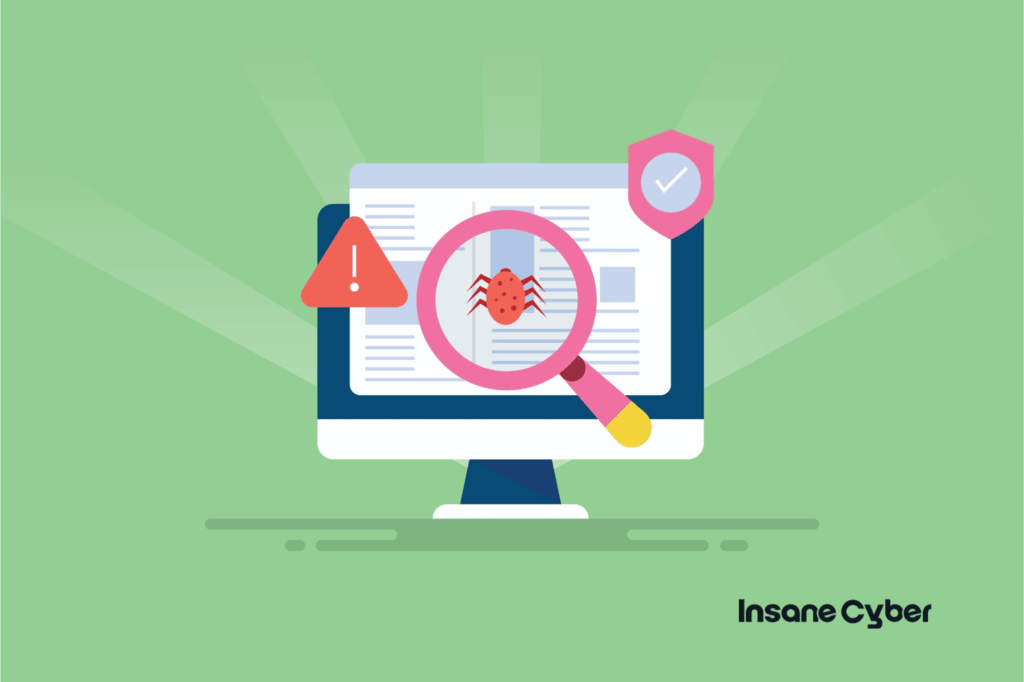No matter what industry you are in, understanding what’s happening on your network is absolutely crucial. It’s the key to spotting threats early, responding effectively to incidents, and keeping a close eye on your digital environment.
To build an accurate picture of your network’s health and security, you need comprehensive network data that reveals which systems and services are communicating, and how traffic flows through your organization. While firewalls, NetFlow, and other analysis tools exist, they often fall short—either by providing incomplete information or by being prohibitively expensive to deploy at scale.
When configured properly, Zeek delivers a wealth of network data without bogging down your infrastructure or overwhelming your security team with noise. Instead, it extracts meaningful fields from network traffic, transforming raw data into actionable intelligence. This empowers security teams to craft precise detections, monitor activity in real time, and respond swiftly to emerging threats. While firewalls and other active security tools are essential for blocking known bad traffic, there’s a powerful open-source platform that takes a different approach: Zeek.
Think of Zeek (you might have known it as Bro) not as a bouncer at the door, but as a highly diligent security analyst quietly observing and meticulously documenting every conversation and interaction happening across your network. It’s a robust network traffic analyzer designed with security in mind, and it’s a favorite among threat hunters and security teams for good reason.
Unlike security appliances that actively interfere with traffic flow, Zeek is a passive listener. It sits on your network’s edge or at key internal points, taking in a copy of the traffic – whether from a dedicated sensor, a virtual machine, or a cloud instance. It doesn’t block or reroute anything. Instead, Zeek diligently interprets the network activity and generates incredibly detailed logs and custom data outputs.
These outputs become a goldmine of information, ready for you to review manually, store for historical analysis, or feed into your Security Information and Event Management (SIEM) system like Splunk or Elastic. This passive approach gives you a clear, unbiased picture of network activity without impacting performance.

While Zeek can certainly detect anomalies, it doesn’t operate like a traditional intrusion detection system (IDS) such as Suricata, which focuses on signature and rule-based detections. Think of Suricata as the guard dog trained to bark at known threats, whereas Zeek is more like a forensic analyst, sifting through every detail for anything out of the ordinary.
Zeek excels at deep protocol analysis, allowing you to zoom in on specific network protocols for thorough investigation—something that’s invaluable during threat hunting. The more data you have at your fingertips, the sharper your insight when tracking down unusual activity.
It’s common to see Zeek and an IDS like Suricata working side by side, providing a layered defense. Suricata might alert you to a known bad pattern in your traffic, while Zeek logs the surrounding context, helping you piece together the full story. Used together, they offer a powerful, complementary toolkit for defending your environment.
And you can count on Zeek to keep pace with the fast-moving world of cyber threats. The project typically releases new versions about three times a year, ensuring users benefit from the latest features, security enhancements, and bug fixes regularly.
If you want to paint a complete picture of what’s really happening on your network, you first need to know how you’re capturing the data in the first place. There are a few popular approaches:
The bottom line: Each method has trade-offs—whether it’s cost, detail, or completeness. That’s why many security teams turn to Zeek, which strikes a powerful balance between depth, context, and scalability.

Zeek stands out from the crowd with a range of powerful capabilities:
Flexibility
It’s incredibly flexible, working equally well with captured traffic files (PCAPs) or analyzing network activity in real-time. Zeek is built to handle the demands of high-performance networks and is trusted by large organizations worldwide, demonstrating its scalability and reliability on commodity hardware. Its modular design means you aren’t limited to out-of-the-box analysis; you can extend its capabilities and create custom analyzers to fit your specific needs.
Zeek is a go-to tool for network security monitoring, playing a vital role in incident response and, critically, in proactive threat hunting.
Network Protocols
One of Zeek’s major strengths is its deep understanding of network protocols. It doesn’t just look at the surface level; it analyzes traffic at the application layer, providing rich, semantic details about communications like HTTP sessions, DNS queries, SSL handshakes, and much more. This deep analysis is powered by a domain-specific scripting language that allows security teams to craft highly specific monitoring policies tailored to their environment and potential threats.
This means you’re not stuck with generic detections; you can fine-tune Zeek to look for the specific patterns of activity that concern you most.
So, where does Zeek fit alongside traditional intrusion detection systems (IDS) like Suricata? Actually, they complement each other beautifully for a true defense-in-depth approach.
Here’s how it works:
By deploying both on your network, you’re covering all your bases. Suricata can rapidly alert you to potential threats in real time, while Zeek gives you the forensic data and rich context to investigate what triggered those alerts—and spot stealthy or novel activity that signature-based tools might miss.
Combining Zeek’s comprehensive network visibility with Suricata’s precise signature-based detection gives security teams a much broader, more resilient view—so you’re ready for both the threats you expect and those you don’t see coming.

Ready to bring Zeek’s powerful network analysis to your security toolkit? Installation is quite straightforward on macOS and Linux, with pre-built packages readily available. As open-source software, you can grab the code from GitHub, but it’s often simpler to use your operating system’s package manager.
If you’re on macOS, Homebrew makes installation a breeze. Just open your terminal and run:
Bash brew install zeek
Alternatively, MacPorts is another great option for macOS users.
For Ubuntu and many other Linux distributions, you can add the official Zeek repository and install it using apt:
Bash sudo apt update sudo apt install zeek
Zeek is included in repositories for numerous Linux distributions, simplifying the installation process across different flavors. You can also find binaries through the openSUSE Build Service, and FreeBSD users will find it available in FreshPorts. While building from source is always an option, these package manager methods are generally the quickest way to get up and running. No matter your platform, Zeek’s broad availability makes installation accessible.
Deploying Zeek is more than a simple installation—it’s about getting it ready to reliably monitor your network. Here’s what you can expect as you roll Zeek out into your environment:
/opt/zeek/logs/current—to confirm it’s capturing and analyzing network traffic as expected. These logs will be your basis for ongoing network insight and threat detection.
With Zeek installed, there’s a short checklist to tackle before it can get to work monitoring your network. Here’s how to set the stage:
Choose the Right Version: Start by ensuring you have a Zeek version compatible with your system’s OS. If there’s an obscure feature you need from an older release, you can usually find these on GitHub.
Install Dependencies: Confirm that all necessary libraries and dependencies are present. Package manager installations often handle this for you, but it’s good to double-check if you’re compiling from source.
Adjust Network and Runtime Settings: Next, you’ll customize Zeek’s configuration files to reflect your local network environment:
Define the network segments you want Zeek to monitor (typically, you’ll edit zeekctl.cfg and networks.cfg).
Adjust runtime parameters to suit your monitoring infrastructure—whether on physical hardware, a VM, or cloud deployments.
Deploy ZeekControl Settings: Zeek uses ZeekControl (often called zeekctl) to manage deployment. Initialize ZeekControl, apply your configuration, and validate the setup to make sure everything’s wired correctly.
Verify and Explore Log Output: Once configuration is complete, start Zeek and look for log files in the designated output path (/opt/zeek/logs/current by default). If logs appear as expected, you’re ready to dig into the network data.
Transitioning from installation to hands-on analysis is smooth as long as you follow these essential prep steps.
Once Zeek is installed, you can immediately start analyzing network traffic. To process a captured traffic file (PCAP), you’ll use a simple command in your terminal:
Bash zeek -r filename.pcap
Running this command tells Zeek to analyze the specified PCAP file and, in the process, it will generate a series of detailed log files in your current directory.
If you’re running Zeek as a service or within a more persistent deployment, you’ll typically find these log files stored in /opt/zeek/logs/current. Navigating to this directory lets you confirm Zeek is up and running—if everything is set up correctly, you should start to see fresh log files appearing here after each analysis.
These logs are where the real insights lie, offering a window into the network’s activity. These logs are where the real insights lie, offering a window into the network’s activity.
Zeek produces a variety of log files, each capturing different facets of the network traffic it observes. Exploring these logs is fundamental to understanding network behavior and identifying suspicious activity. You can start by simply Browse these files using command-line tools like less, grep, or awk for quick investigations. For larger environments or ongoing monitoring, integrating Zeek logs into a SIEM platform like Splunk or Elastic Stack is a common practice, enabling centralized analysis, alerting, and long-term storage. Zeek can easily output logs in formats like JSON, making integration with various security tools and dashboards seamless.
Let’s take a look at some of the most important log files Zeek generates and what they can tell you:
The connection log (conn.log) is perhaps the most fundamental. It provides a high-level overview of every network connection Zeek sees, including source and destination IP addresses and ports, the protocol used, and the duration and byte count of the session. This log is invaluable for spotting unusual communication patterns or identifying connections to unexpected destinations.
Let’s break down the key fields you’ll find in conn.log:
With this detailed breakdown, conn.log becomes your go-to resource when you want to baseline typical network behavior or dig into suspicious activity. For instance, you might spot a workstation reaching out to an IP it’s never contacted before or notice a spike in data transfer between two endpoints—both classic signs that warrant a closer look.
By drilling into these fields, you’ll quickly develop a richer understanding of what’s normal in your environment, making it much easier to catch the abnormal.
For analyzing web activity, the HTTP log (http.log) is your go-to. It details HTTP requests and responses, including the URLs visited, user agents, HTTP methods (like GET and POST), and response status codes. This log can help uncover malicious web Browse, suspicious file downloads, or interactions with command-and-control servers.
The DNS log (dns.log) captures all Domain Name System queries and their responses. Monitoring DNS activity is critical for threat hunting as it can reveal attempts to resolve malicious domain names, track the behavior of malware, or identify potential command-and-control communication channels.
Looking at secure shell traffic? The SSH log (ssh.log) provides details on SSH client and server connections, which is essential for detecting unauthorized access attempts or monitoring legitimate SSH usage within your network.
Similarly, the FTP log (ftp.log) tracks File Transfer Protocol sessions, including usernames, passwords (though ideally, you’re not using FTP with cleartext passwords!), and details about transferred files and executed commands. This log can help identify weak credentials or unauthorized file transfers.
The dynamic protocol detection log (dpd.log) is particularly useful for uncovering stealthy threats. It flags protocols running on non-standard ports, which can be an indicator of malware or attackers attempting to evade detection by using unusual network configurations.
Zeek also provides specialized logs for industrial protocols like Modbus and DNP3, crucial for organizations operating industrial control systems (ICS). There are also logs for protocols like SMB, commonly used in Windows file sharing environments. Monitoring these protocols is vital for protecting critical infrastructure and identifying potential lateral movement.

Curious about how to turn raw network captures into actionable intelligence? In an upcoming article, we’ll walk through the step-by-step process of converting PCAP files into Zeek logs and then diving deep into the resulting data. You’ll learn how to extract key insights from your traffic, spot unusual activity, and leverage Zeek’s logs for real-world investigations. Whether you’re working with sample captures in your lab or dealing with live traffic in a production environment, this guide will arm you with practical techniques for analyzing and interpreting network evidence.
This is where Zeek truly shines. Its detailed logging and analytical capabilities make it an indispensable tool for both proactive threat hunting and reactive incident response.
One of the most powerful features for investigators is the Unique Identifier (UID) assigned to each connection Zeek observes. This UID acts like a thread that links related entries across different log files. For instance, you can take a UID from a suspicious connection in the con.log and use it to find all related DNS queries in the dns.log or HTTP requests in the http.log. This ability to correlate events across different protocols dramatically speeds up investigations and helps paint a complete picture of a security incident.
By analyzing Zeek’s rich logs, security teams can readily detect anomalies and suspicious activity that might otherwise go unnoticed. This includes identifying unauthorized remote access attempts, detecting malware communicating with external servers, or spotting unusual file transfers and login attempts.
What truly elevates Zeek is its customization and extensibility. Using its powerful domain-specific scripting language, security professionals can create custom analyzers and write scripts to detect very specific threats or monitor unique behaviors relevant to their environment. Want to flag any DNS request for a newly registered domain? Or trigger an alert if a specific type of file is transferred using a non-standard protocol? Zeek’s scripting language allows you to tailor its detection capabilities precisely. This flexibility means you’re not limited by predefined rules; you can adapt Zeek to the ever-changing threat landscape and the specific risks your organization faces. This ability to implement site-specific monitoring policies ensures Zeek aligns perfectly with your security strategy.
In conclusion, Zeek is far more than just a network traffic analyzer; it’s a fundamental platform for comprehensive network security monitoring, threat hunting, and incident response. Its capacity to deeply analyze network traffic, generate extensive and correlated logs, and its highly modular and extensible architecture make it an essential tool for cybersecurity professionals at all levels.
By effectively leveraging Zeek, security teams gain unparalleled visibility into their network activity, enabling them to detect threats earlier, investigate incidents with greater speed and accuracy, and ultimately strengthen their overall security posture. It’s a crucial component for any modern Security Operations Center (SOC) looking to stay ahead of attackers.
Our products are designed to work with
you and keep your network protected.